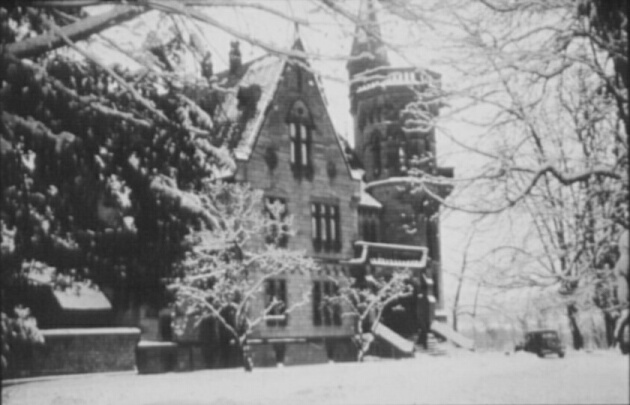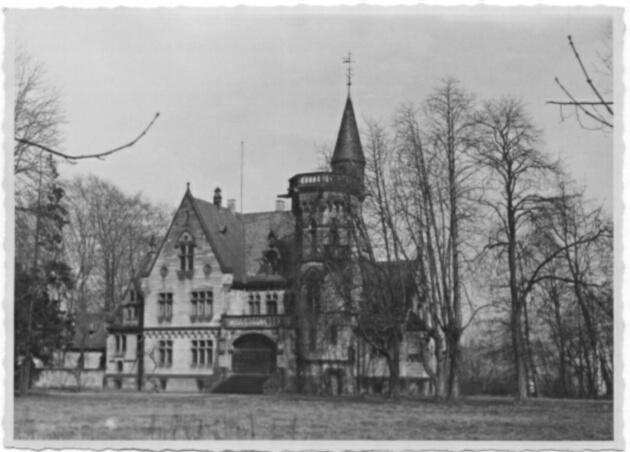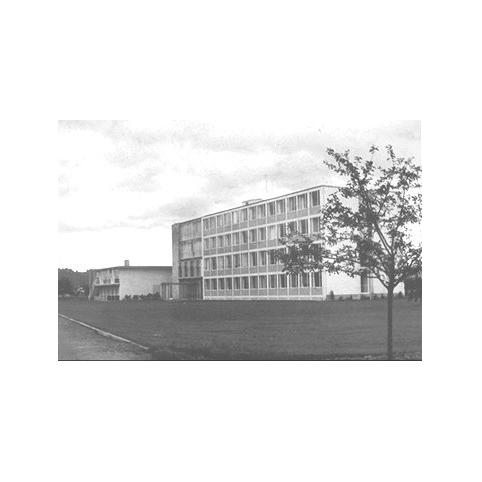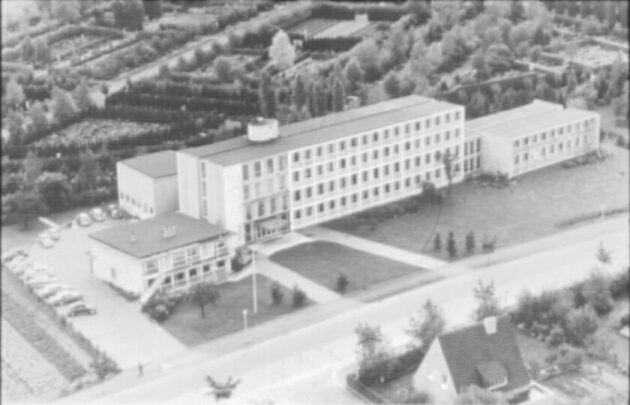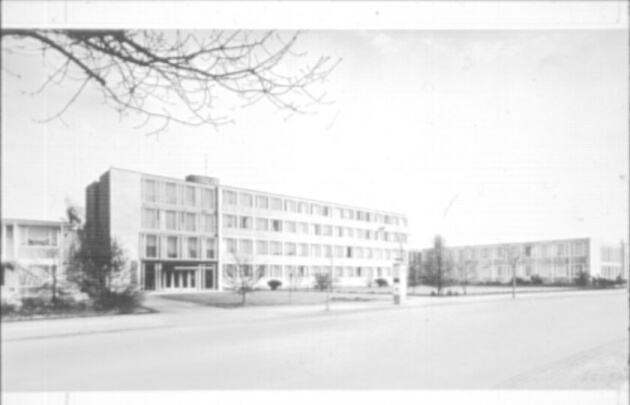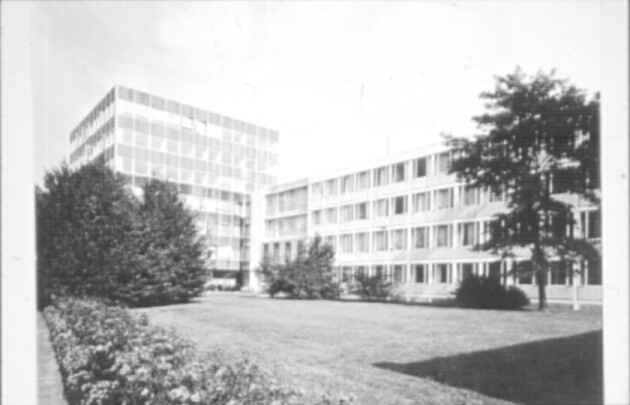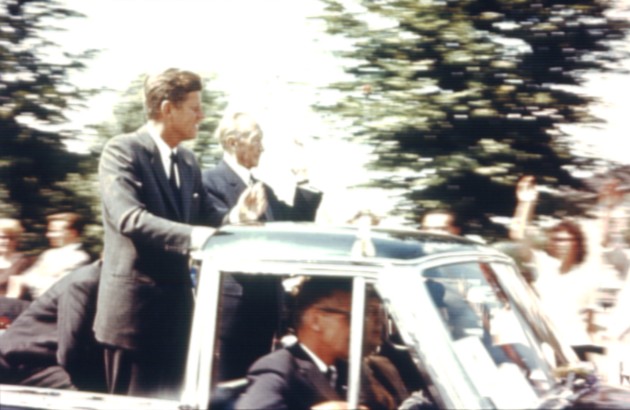The buildings of the DFG Head Office
The predecessor organisation to the DFG, the Notgemeinschaft der Deutschen Wissenschaft, had its headquarters in Berlin. Since 1949, the DFG has been based in Bonn/Bad Godesberg. The buildings on Kennedyallee are an architectural and artistic gem to this day.
In the Berliner Schloss

The Berliner Schloss in the 1920s. The premises of the Notgemeinschaft were located on the 2nd floor to the right of the Eosanderportal.
© berliner-schloss.de
The Notgemeinschaft der Deutschen Wissenschaft, founded in Berlin in 1920, was located in the Berliner Schloss, the Berlin Palace, until 1935. After that, its offices were on the Matthaeikirchplatz in Berlin, and in 1939 the Notgemeinschaft moved into the “Haus der Wissenschaft” (House of Research) in Grunewaldstraße in Steglitz.
In his book, “Erlebtes und Erstrebtes 1860-1950” (Experiences and Aspirations 1860-1950), the first President of the Notgemeinschaft, Friedrich Schmidt-Ott, describes the location changes as follows:
“Only after my departure [from the Notgemeinschaft] in 1934 had a double frontage on the Matthaeikirchplatz been purchased for Notgemeinschaft purposes at a cost of – so I hear – 700,000 Marks that had been intended for research projects, which was replaced by a magnificent new construction on the Fichtenberg in Steglitz, Grunewaldstraße 35. For the length of my time in office we felt most comfortable in the modest premises [in the Berliner Schloss], which incidentally provided a view of the Kaiser Wilhelm Monument and which in part opened onto the Schlossplatz.”
Move to Matthäikirchplatz

The Matthäikirchplatz near the Tiergarten, Berlin, 3 March 1939
© Landesarchiv Berlin: F Rep. 290 (01) Nr. 0186564
The Notgemeinschaft had been asked by the Ministry of Science on 11 September 1934
“as a consequence of the urgent need that had arisen to create rehearsal rooms for the Staatsoper in the Berliner Schloß (...) to vacate the premises leased by the Notgemeinschaft in the Schloß for other purposes”.
At the start of April 1935, it therefore relocated to the building complex at Matthäikirchplatz 6/8, which the Stifterverband (Donor’s Association) had bought. The Notgemeinschaft moved into no. 6 only. No. 8 housed the Volkskundeatlas (Atlas of Ethnology) and the “Moorforschungsinstitut der Deutschen Forschungsgemeinschaft” (the Moor Research Institute of the German Research Foundation), as well as a private tenant.
In Grunewaldstraße 35: “the House of Research”
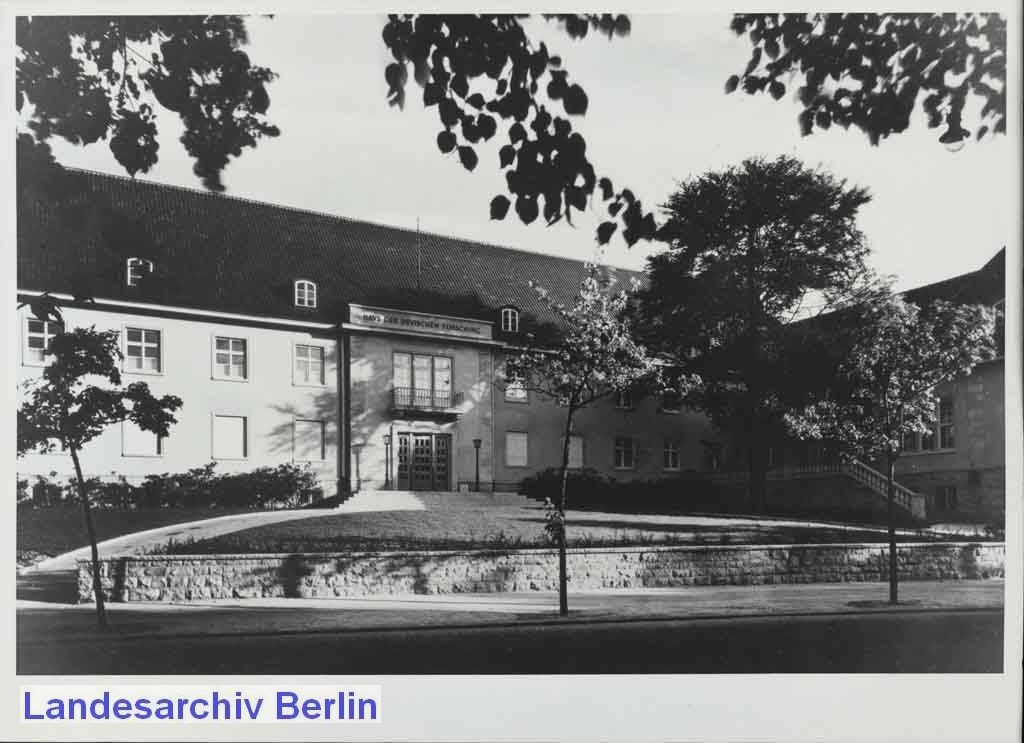
House of German Research, 1940
© Landesarchiv Berlin F Rep. 290 (01) Nr. 0173151
“On 22.3.38 the German Research Foundation was informed by the Oberbürgermeister [Mayor] of the Reich Capital, that due to the Gesetz über die Neugestaltung deutscher Städte (Law on the Redevelopment of German Cities) dated 4.10.1937 and the Verordnung über die Neugestaltung der Reichshauptstadt Berlin (Decree on the Redevelopment of the Reich Capital Berlin) dated 5.11.1937, both our properties in Berlin W 35, Matthäikirchplatz 6 and 8, were required in order to carry out urban development measures. Due to the seizure of both the properties, the German Research Foundation was forced to acquire a different property.” (Internal report of the DFG June 1941)
The aforementioned “Redevelopment of the Reich Capital Berlin” were the plans of Hitler and his architect Speer to rebuild Berlin as the city of “Germania” with monumental buildings and grand boulevards. The Matthäikirchplatz was located in the planned “North-South Axis” and was to be rebuilt into a “Round Square”. Part of the district around the church was demolished before the Second World War, and the remainder of the buildings were destroyed by air raids. It is only the severely damaged and restored St. Matthäuskirche that still stands as a historic structure in the midst of the Kulturforum.
The Notgemeinschaft looked around for other properties and decided to buy the property at Grunewaldstraße 35, since the latter
“was in a suitable position from the point of view of transport, not only for employees but for the Imperial Institute for Agriculture and Forestry and is the most favourably situated with regard to the other institutes in Dahlem that work closely together with us, and indisputably numbers among the most attractive properties in the immediate and more distant environs of Berlin.” (Internal report of the DFG June 1941)
The building was constructed in the style of a manor in the Brandenburg March and had an area of 1,300 square metres. As well as a great hall, a lecture room, a library room and further rooms, the building had 1 “director's office” and “50 offices”.
The Notgemeinschaft moved into the administration building before Christmas 1939. The opening was celebrated at the same time as the 20-year anniversary of the existence of the Notgemeinschaft on 30 October 1940. Construction was financed by the amounts paid in compensation for the expropriation of the building on the Matthäikirchplatz and donations. President Mentzel thanked the Kaiser Wilhelm Society for the “magnanimous donation” of 200,000 Reichsmarks. However, this was in fact a long-term interest-free loan, granted after Rudolf Mentzel asked Ernst Telschow, the Secretary General of the Kaiser Wilhelm Society, to “advance” the sum. The building survived the war unscathed and now houses the Department of Theatre Sciences of the Free University of Berlin.
In 1945 American troops occupied the building in Grunewaldstraße, and the Head Office had to move to Kommandantenstraße in Berlin-Lichterfelde. Karl Griewank, Consultant on the Humanities, represented the German Research Foundation as its chief executive officer, and wound up its affairs and finances in a proper fashion.
Move to Bonn
After the end of the Second World War, the newly established Notgemeinschaft/German Research Foundation moved into its Head Office in Bad Godesberg in Bonn in 1949, initially into a villa on the Rhine also used by the University of Bonn as its Law Faculty, and then to Frankengraben 40, today’s Kennedyallee, which has since become a well-known address for self-governed researching funding in Germany.
The first home of the DFG's Head Office after the Second World War: a villa on the Rhine, Bad Godesberg 1950
© DFG
The central administration building of the DFG Head Office was built in 1954 to a design of Munich architect Professor Sep Ruf. Rapidly expanding functions and a corresponding growth in employee numbers called for new accommodation. Over the years, extensions were constructed all around the original central building.
The newly constructed DFG Head Office in 1954, Bonn-Bad Godesberg
© DFG
In the Research Centre
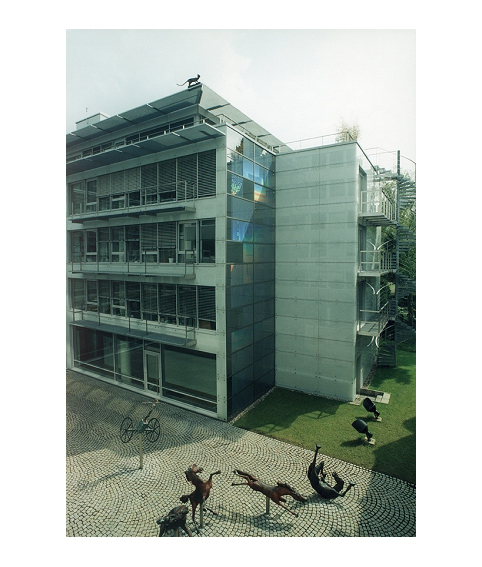
Interior courtyard of the new extension with the hologram “Augenfeuer” (Eye Fire) and the “Phaeton” sculpture
© DFG
In 1976 the DFG Head Office was able to lease office space in the neighbouring “Research Centre of Bonn-Bad Godesberg”; further branches arrived subsequently, which were spread out across the Bonn city area. The sensitive and incremental renovation of the DFG group of buildings commenced in the 1990s. In autumn 2000, the Head Office was able to move into a new extension designed by Bonn architectural partnership Pilhatsch & Partner and Sepp Rössle. The west façade in the interior courtyard features a five-metre by 13-metre hologram with the title “Augenfeuer” (Eye Fire) – the largest hologram in Europe.
